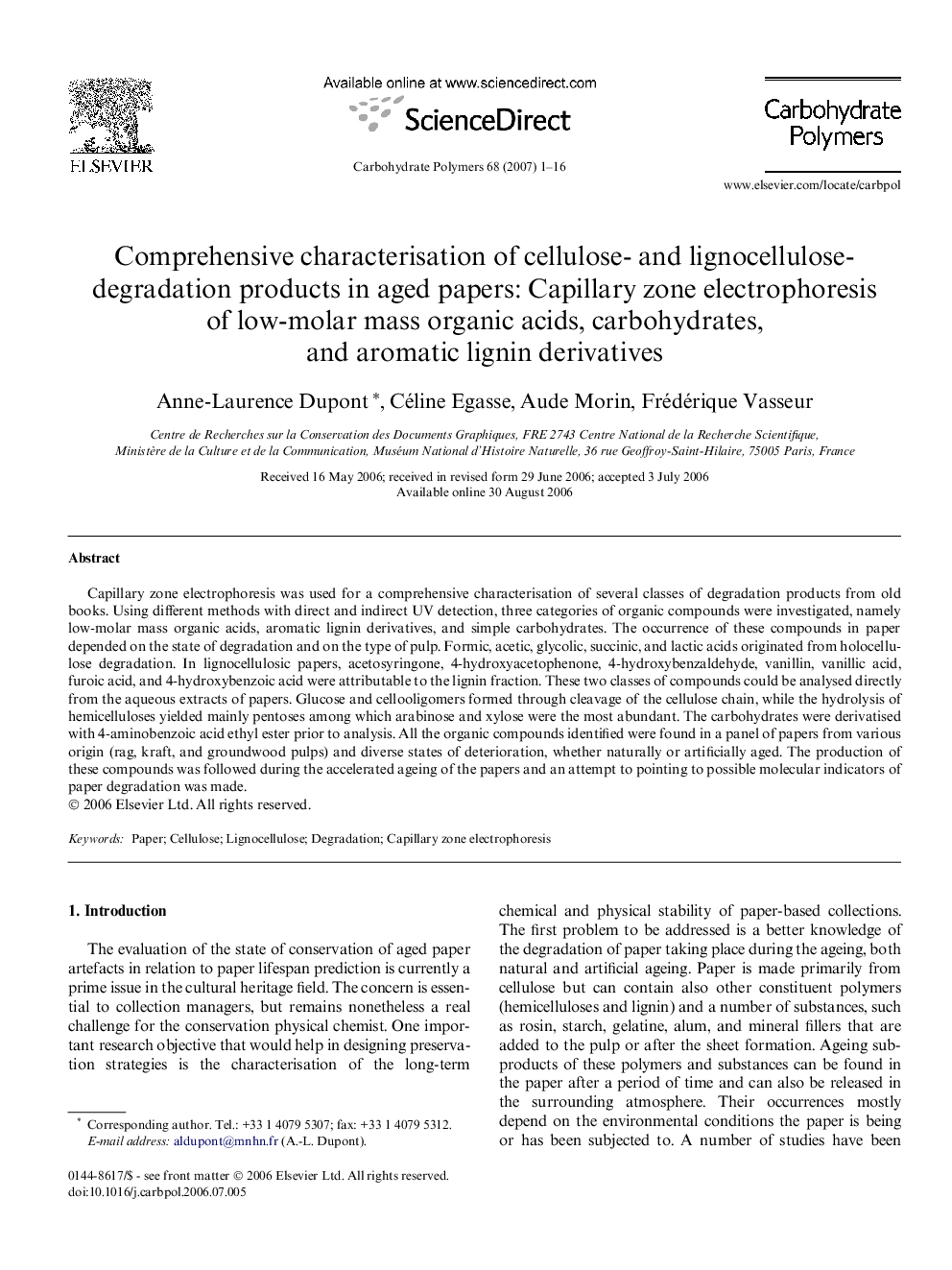| Article ID | Journal | Published Year | Pages | File Type |
|---|---|---|---|---|
| 1380006 | Carbohydrate Polymers | 2007 | 16 Pages |
Capillary zone electrophoresis was used for a comprehensive characterisation of several classes of degradation products from old books. Using different methods with direct and indirect UV detection, three categories of organic compounds were investigated, namely low-molar mass organic acids, aromatic lignin derivatives, and simple carbohydrates. The occurrence of these compounds in paper depended on the state of degradation and on the type of pulp. Formic, acetic, glycolic, succinic, and lactic acids originated from holocellulose degradation. In lignocellulosic papers, acetosyringone, 4-hydroxyacetophenone, 4-hydroxybenzaldehyde, vanillin, vanillic acid, furoic acid, and 4-hydroxybenzoic acid were attributable to the lignin fraction. These two classes of compounds could be analysed directly from the aqueous extracts of papers. Glucose and cellooligomers formed through cleavage of the cellulose chain, while the hydrolysis of hemicelluloses yielded mainly pentoses among which arabinose and xylose were the most abundant. The carbohydrates were derivatised with 4-aminobenzoic acid ethyl ester prior to analysis. All the organic compounds identified were found in a panel of papers from various origin (rag, kraft, and groundwood pulps) and diverse states of deterioration, whether naturally or artificially aged. The production of these compounds was followed during the accelerated ageing of the papers and an attempt to pointing to possible molecular indicators of paper degradation was made.
